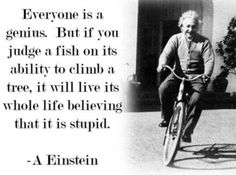How many times when talking with others in our school do you hear the phrase “We have to get them ready for ____”? You can fill in the blank with all kinds of different phrases – things like 6th grade, junior high, ISTEP, or any one of the other things we are trying to get our students prepared for. It is a valid thing to think about because we do have to prepare our students for the future. However…

How often do you hear the words “We have to be ready for the students that are coming to us.”? In most schools, the environment of the school is set up for one specific developmental stage. I know through conversations with many of you that we have at least a cursory understanding of the fact that our 10, 11, and 12 year old students fall all over the developmental spectrum. It’s one of the things I love about working with 5th and 6th grade students, but it can also be one of the greatest challenges. While not being intentional, sometimes schools set up a system that expect all students to fit within a certain box, and when they don’t fit, it creates struggles for students, teachers, and parents. So the question begs to be asked, is our system set up to meet our students wherever they are in terms of developmental needs?
Think about this for a moment: Should we be worried about whether the kids are ready for the school, or should we be worried about whether the school is ready for the kids?
Next week’s post will share with you my recent experiences visiting a few elementary classrooms. I am sharing these not to say that we need to try to mirror their methods or strategies, but to help us understand the types of classrooms our students will be coming to us from. One of the things that I feel sometimes happens in education is that teachers of older grades sometimes “look down upon” the teachers of younger grades. I think there can be great value in learning from the ways that teachers in grades below us meet the developmental needs of their students.
As we move forward, let’s work towards building our expectations for our students based on where they are when they get to us. We can still strive to move them to where they need to be, but we need to be open to the fact that some of our students do not fit in the box that we have created for them. Some of those outliers may need us to provide extra support, while others may just need us to get out of the way and let them learn.
What strategies and methods do you use to meet the needs of the student who walks into your classroom on a daily basis? Are there methods that seem to help your students who are less mature than the rest of your class? Or, on the other end of the spectrum, what do you do with the students that are much more mature than the others in your classroom? Share your thoughts in the comments below!

After working in the elementary, you realize just how much work is required in lesson planning, competitive bulletin board displays, in helicopter parents, making stations, testing …. There is a lack of opportunities to make extra money in the lower grades because they don’t have coaches or a lot of extra curricular activities that pay. After working in the junior high, you realize just how much more accommodating and flexible the teachers are in the lower grades compared to constancy in the junior high environment.
LikeLike